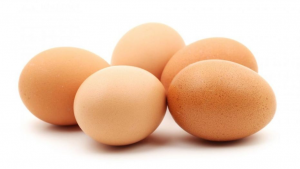#ThursdayThoughts
As promised, each Thursday, we will now offer you a piece of educational, science, or research related information. The purpose of our #ThursdayThoughts post is to share with you fact-based content that can enlighten and assist you on your fertility journey. Enjoy our post! Helping to Create New Beginnings….
Use of Donor Eggs
The use of donor eggs (eggs harvested from a donor intended for use in a different patient or couple) is becoming increasingly common. Patients may choose to use donor eggs for a variety of reasons, most often due to diminished ovarian reserve and/or advanced age in a female patient. Other patients may also choose to use donor eggs including same-sex male couples, single males, women in whom an egg retrieval procedure is contraindicated, and women who are carriers of a heritable disease.
There are multiple options available for patients who wish to use donor eggs:
- Egg bank- Frozen eggs can be obtained through egg banks. Patients can look through profiles of anonymous donors, and once they find a suitable donor, eggs can be shipped to the clinic of their choice. Eggs are then fertilized with sperm and are later transferred to a recipient’s uterus. Advantages of this option include shorter timeline to transfer and higher affordability. Some banks offer ‘guaranteed’ plans which allow select patients the option of receiving a refund if no live birth is achieved.
- Agency donor- Patients can look through profiles of anonymous donors available through agencies or through clinics that have an ‘in-house’ donor program. Once a suitable donor is found, she undergoes an IVF procedure and all eggs obtained through a particular cycle are donated to the recipients. Typically, all eggs are fertilized at the time of the egg retrieval and an embryo is transferred to a recipient in a fresh (transfer 5 days after egg retrieval) or frozen (embryos are frozen and transferred later) cycle. Advantages of this option include high success rates and more embryos available for cryopreservation, typically allowing for genetically-related siblings and/or preimplantation genetic testing if desired.
- Directed donor- Patients can opt to use a friend or family member as a directed egg donor. Directed donors are screened through the patient’s clinic of choice, and typically a physician can discuss the likelihood of success depending on the directed donor’s age and reproductive potential. The donor then undergoes an IVF procedure. The fertilization and transfer process are the same as they are for anonymous agency donors. Advantages of this option include high affordability (although the cost may still be higher than egg bank cycles), and the reassurance of working with a donor that is familiar to the recipient. Success rates of directed donor cycles are highly dependent on the characteristics of the preferred donor.
Once a recipient has chosen a donor and the donor portion of the cycle is completed, the recipient undergoes a transfer cycle. This will typically involve taking estrogen for a specified amount of time, with occasional ultrasounds to monitor uterine lining development. Once optimal uterine lining thickness has been achieved, progesterone is prescribed and the embryo transfer is performed on the sixth day of progesterone exposure.
Other than the calculation of fetal aneuploidy risk based on the age of the egg donor (versus the recipient’s age), there is no difference in the management of donor egg versus autologous (using the patient’s own eggs) in vitro fertilization pregnancies.
For more information regarding the use of donor eggs, please visit our website https://www.ivfcenterhawaii.com/ or call 808-545-2800 to consult with a physician at the Fertility Institute of Hawaii.
